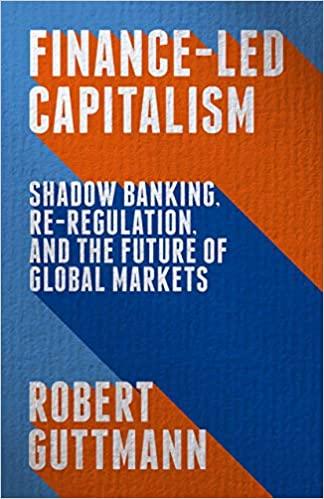Question
Problem #1 Homemade Leverage Mr. Green owns 250 shares of ABC Company. There are 12,500 shares of stock outstanding. The stock sells for $42 per
Problem #1 Homemade Leverage
Mr. Green owns 250 shares of ABC Company. There are 12,500 shares of stock outstanding. The stock sells for $42 per share. The company is financed by 70% equity and 30% debt at 5.5% interest. Mr. Green can borrow at the same interest rate as the company. The company expects to earn $66,675 annually. Ignore taxes. Mr. Green is not pleased with the level of debt carried by the company, so he is planning to sell his ownership and buy shares in XYZ Company using homemade leverage. XYZ is exactly the same size as ABC, expects the same earnings, and sells for the same price, but is an all equity financed company. Convert his ownership to XYZ company and answer the following questions.
What is the total value of each company?
What return does Mr Green expect on his shares of ABC Company?
How many shares are outstanding for XYZ Company and how many shares will Mr. Green have to buy in order maintain his level of return?
Round up/down to the nearest 10 (756 becomes 760).
How much money will Mr. Green have to borrow to shift to homemade leverage?
What is Mr. Green's earnings per share for each of the ownership positions, ABC company before the sale and XYZ company after the conversion?
If both company pay out all earnings, what is Mr. Green's cash flow for ABC company before the sale and for XYZ company after the conversion?
Problem #2 Breakeven EBIT and Leverage
PB&J Company is considering one of two capital structures. Plan A calls for 456,750 shares of stock as an all-equity company. Plan B calls for 331,850 shares of stock with debt of $5.75 million in debt? Interest rate on the debt is 8.75%. Ignore taxes. Calculate the EPS for each proposal under the following parameters.
Which company structure has the higher earnings per share if net income is $1,150,000?
Which company structure has the higher earnings per share if net income is $2,415,000?
What is the breakeven level of income between the proposed plans and how much is the EPS on that level of income?
Problem #3 Calculating WACC
Blizzard Inc. has a debt to equity ratio of 1.25. Its weighted average cost of capital is 8.65% and its cost of debt is 7.15% Corporate tax rate is 30%.
What is the company's cost of equity capital?
What is the company's unlevered cost of capital?
What would the cost of equity be if the if the debt to equity ratio was 2.5? What would the WACC be if the debt to equity ratio was 2.5?
Problem #4 Firm Value
TBone Corporation expects to have an EBIT of $194,660 for the foreseeable future. The firm is an all equity firm with a 12.6% cost of equity. The firm tax rate is 40%.
What is the current value of the company?
TBone is considering borrowing at 7%, what would the company be worth if it takes on debt equal to 30% of its unlevered value? What if it takes on debt equal to 45% of its unlevered value?
Problem #5 MM Propositions
ND Corporation is planning to repurchase part of its common stock by converting that financing to debt. The debt to equity ratio is expected to increase from 15% to 35%. Current debt is $775,000. Debt interest is 6.3%. EBIT is expected to be $276,800. Ignore taxes.
What is the market value of the company before and after the debt restructuring plan?
What is the expected return on the company's equity before the restructuring is completed?
What is the expected return on the equity of an otherwise identical all equity firm?
What is the expected return on the equity after the restructuring is complete?
Step by Step Solution
There are 3 Steps involved in it
Step: 1

Get Instant Access to Expert-Tailored Solutions
See step-by-step solutions with expert insights and AI powered tools for academic success
Step: 2

Step: 3

Ace Your Homework with AI
Get the answers you need in no time with our AI-driven, step-by-step assistance
Get Started


